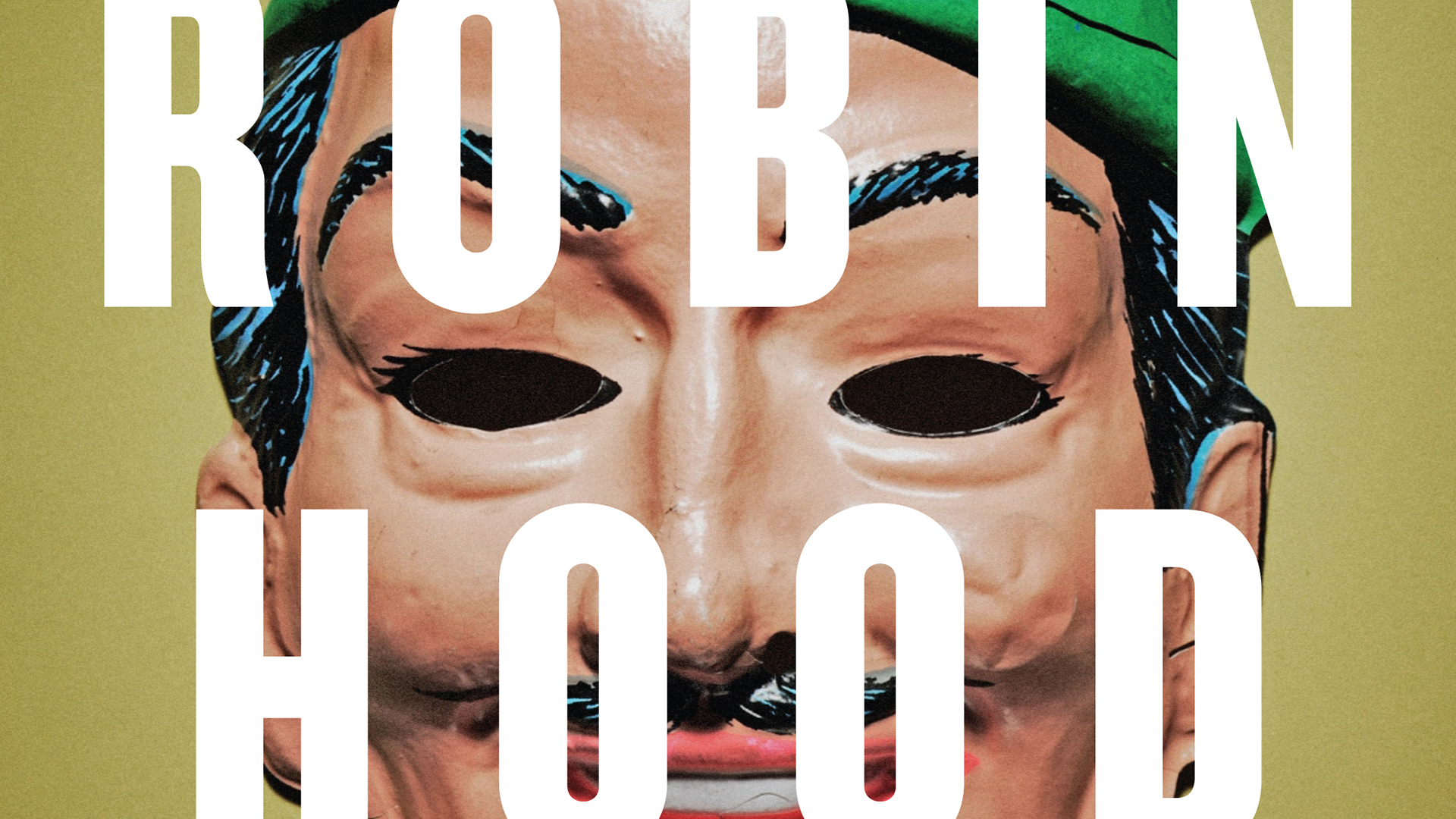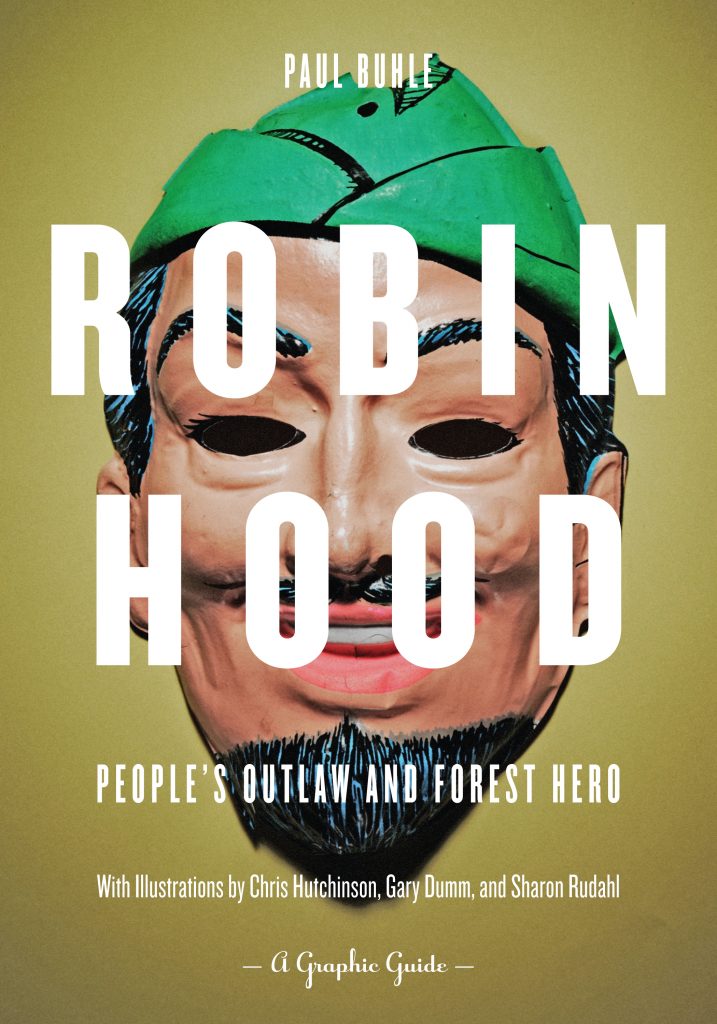By Michael Schreiber
Socialist Action
July 12, 2012
As I write, in late May 2012, a playhouse here in Philadelphia is advertising its production of “Robin Hood” as an action play “aimed at kids five years and up.” At the same time, in Chicago, anti-NATO demonstrators are calling for a “Robin Hood tax” on financial transactions, as part of their demand to “tax the rich.”
Who is the real Robin?
Is he the swashbuckling hero portrayed in cartoons, TV, and Hollywood musicals? The class-conscious guerrilla leader, fighting to avenge the peasantry against their oppressors? Or perhaps the “Green Robin,” who with his Merry Men inhabits the woodlands in respectful harmony with Nature?
Robin is not the same champion to all people. Throughout
the centuries, he seems to have been redefined, if not re-invented, with
each telling of the tale. Nonetheless, scores of works have probed into
the question of Robin’s identity—an extraordinary quest, considering
that most investigators agree that the Robin Hood stories are mainly
fiction.
With his new book, Robin Hood: People’s Outlaw and Forest Hero, Paul Buhle, editor of the left journal Radical America,
enters the ranks of historians seeking to uncover the multiple themes
and meanings of the Sherwood Forest legend. In his conclusions, however,
Buhl readily sides with those who perceive that Robin over the
centuries has appeared primarily as a standard-bearer in battles against
injustice.
He states, “No other medieval European saga
has had the staying power of Robin Hood; no other is wrapped up
simultaneously in class conflict (or something very much like class
conflict), the rights of citizenship in their early definitions, defense
of the ecological systems, and the imagined utopia of freedom
disappearing into a mythical past.”
Buhle acknowledges, of course, that scriptwriters often eviscerate the political content of the Robin Hood legend. A number of recent movie renditions reduce the hero to little more than a romantic or heroic action figure. Or worse, they present him as the willing agent of jingoistic big-power politics. For example, says Buhle, while Ridley Scott’s Robin Hood mega-feature of a couple of years ago might give a slight nod to Robin’s role as the defender of downtrodden villagers, the subject “in practice only manages to protect one empire against another.”
The earliest known
references to Robin Hood in popular culture appeared in the early 13th
century, including in the rolls of several English justices. This
suggests that the outlines of the fictional character might be based,
however loosely, on the historical memory of the exploits of a real
person or persons.
Buhle skips over this tantalizing question, however, and begins his chronology many centuries later with The Dream of John Ball,
a novella by William Morris, artist and “father of British socialism.”
In this work, which was serialized for newspaper readers in 1886-87,
Morris plots the adventures of a man who leaps from the modern era into a
fourteenth-century English village. There he finds a group of yeomen
(independent small landowners) who have risen up against the corrupt
local sheriff and other Crown officers who seek to oppress them.
The
villagers are led by the lay preacher John Ball, a real though obscure
figure in English history. According to Morris, Ball led his followers
along the trail of rebellion blazed by Robin and his men. Thus, a ballad
singer in Morris’ narrative states to the time-traveler, “Was it not
sooth that I said, brother, that Robin Hood should bring us John Ball?”
John
Ball was a participant in the uprising of 1381, whose major leader was
Wat Tyler. The yeomen under Tyler’s command armed themselves with staves
and pitchforks and marched on London to protest high taxes and growing
poverty. After meeting with the King, Tyler was betrayed; he and Ball
were assassinated, and the movement was dispersed.
Buhle
argues that Wat Tyler’s uprising of 1381, “the first major outbreak of a
class and social conflict across England . . . prepared the ground for
the popularity of the Robin Hood saga.” Robin Hood was called into
existence by popular desires for a hero figure to represent their
struggles for social justice.
Perhaps the first allusion
to Robin in literature, William Langland’s “Piers Plowman,” appeared in
manuscript in the years immediately proceeding Wat Tyler’s rebellion.
In the story, Sloth, a priest, confesses, “I kan [know] not parfitly my
Paternoster as the preest it singeth, / But I kan rymes of Robyn Hood
and Randolf Erl of Chestre.” In other words, he cannot always remember
his prayers, but he can readily recite the ballads of popular heroes.
(Five centuries later, Mark Twain put a similar statement into the mouth
of the whimsical young rebel, Tom Sawyer.)
While Buhle convincingly argues that the period of Wat Tyler’s rebellion was a “Robin Hood era,” the reader might wonder why Buhle concentrates the better part of two chapters on those years alone. It was a full century after Wat Tyler that the efforts by landlords to enclose the pastures began to get fully underway in England, expelling thousands of small farmers from the countryside. Didn’t the impoverished population need Robin Hood at that moment to help chart a path of resistance?
Indeed,
Buhle briefly notes, Robin as protector of the poor appeared again in
the late fifteenth century in a collection of verse tales under the
title, “A Lyttell Geste of Robyn Hode.” But from the late sixteenth
century onward, a more conservative Robin began to enter English
literature, often as an official project to erase the militantly radical
one. Following the defeat of the Spanish armada, audiences saw Robin
Hood as a patriotic national hero on the London stage.
And Shakespeare’s Robin Hood-type characters, such as Orlando and the Duke in As You Like It, were noblemen who had temporarily fled palace life for a sylvan arcadia.
From
there, Buhle follows the contrasting renditions of Robin Hood and his
band through the centuries. Important examples include Joseph Ritson’s
popular volume of 1795, poet John Keat’s antiwar Robin and Marian of
1817, Walter Scott’s patriotic “Ivanhoe” of 1819, storyteller and
illustrator Howard Pyle’s “Merry Adventures” of 1883, and Errol Flynn’s
version filmed on the eve of World War II (1938), in which he vanquishes
(Hitlerite?) evil while vying for the heart of Olivia de Havilland’s
Maid Marian.
Buhle presents his chapters as a series of
almost autonomous essays. Each chapter is packed with facts and critical
insight, but often on themes that to a certain extent had been dealt
with earlier. The discontinuity and repetition in the narrative left me a
bit confused, at least on my first time thorough the book, over where
the author was leading his readers.
Luckily, the book’s
illustrations provide a framework to help us make sense of Buhle’s
choppy structure. The illustrations appear in four separate sections
that underscore major themes of the adjacent chapters. Gary Dumm gives
us a comic-strip portrayal of the peasant and religious struggles in
England of the fourteenth century. Christopher Hutchinson, a supporter
and contributor to Socialist Action newspaper, uses collage to
provide Robin Hood heroes for the modern age (Che, Malcolm, Harriet
Tubman, Rosa Luxemburg, etc.). And Sharon Rudahl’s cartoons tell the
tales of Maid Marian—warrior, revolutionary activist, and
proto-feminist.
Why read this book? Because the world
still has a need for Robin. Today, Buhle points out, “the rich and
powerful now command almost every corner of the planet and, in order to
maintain their control, threaten to despoil every natural resource to
the point of exhaustion. Meanwhile, billions of people are impoverished
below levels of decency during centuries of subsistence living.”
Yet resistance to authority continues, and so, Robin lives on “in the streets of Cairo, Egypt, and Madison, Wisconsin, USA, among the many other places where people dream of a better life and struggle for it openly, cheerful to be rebellious.”
The article above was written by Michael Schreiber, and is reprinted from the July 2012 print edition of Socialist Action newspaper.







